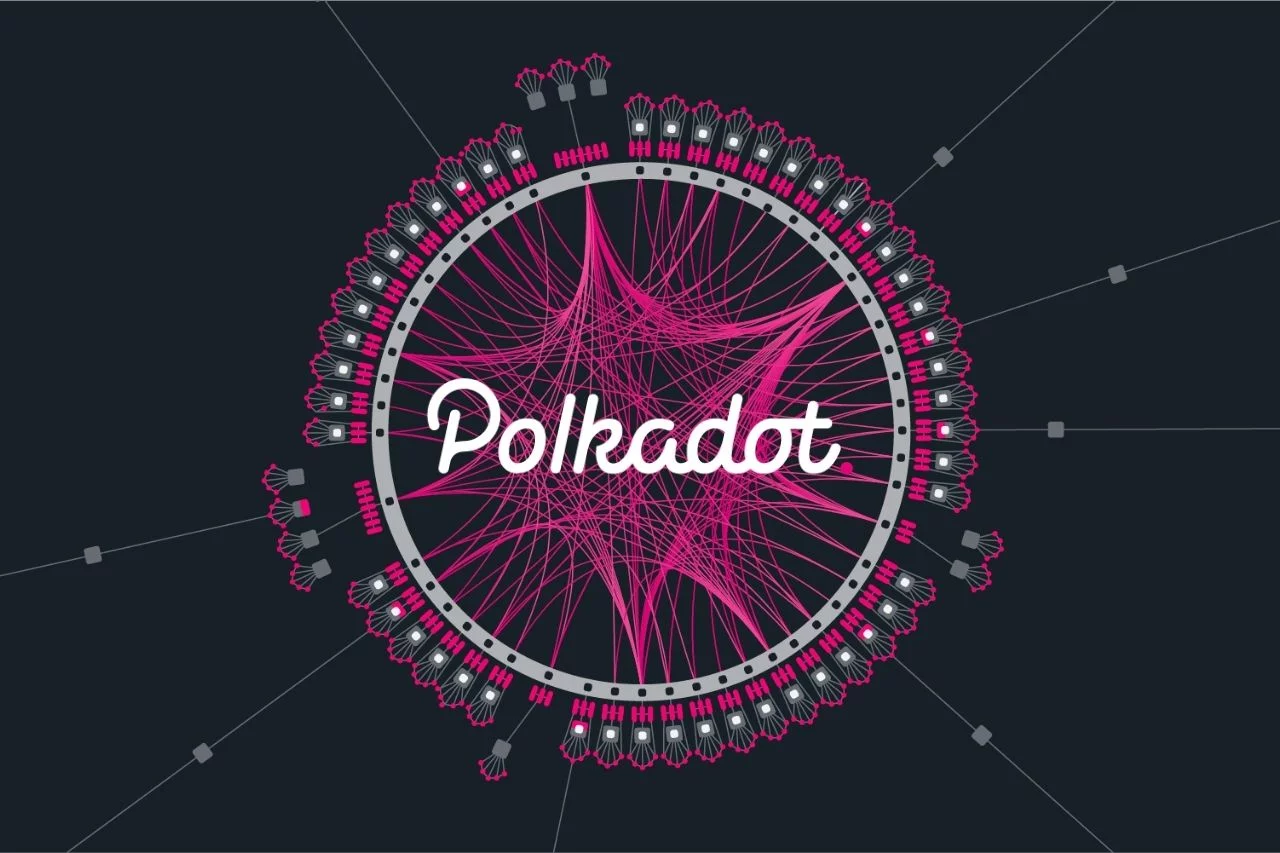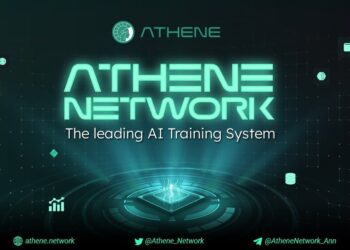What is a parachain, exactly?
The Polkadot (DOT) and Kusama (KSM) networks are the two networks that are connected to the specialized blockchains known as Parachains. Users are able to make use of them for a variety of purposes, one of which is connecting to the primary blockchain, also known as the relay chain. This chain is considered the heart of the Polkadot and Kusama networks. Why? Cross-chain blockchains are unable to transfer assets from one blockchain to another unless there is a relay chain in place.
Each parachain serves a unique purpose and, in many instances, is compatible with the tokens that correspond to it. Before a parachain can become either a Polkadot or a Kusama parachain, it must first compete in an auction. Polkadot’s website provides additional details on how individuals can participate in parachain auctions and be accessed at any time.
What is a Polkadot parachain?
The Polkadot network is comprised of a number of different blockchain shards, which have been collectively referred to as “parachains.” Blockchains of the next generation, known as Polkadot parachains, are capable of exceeding the constraints imposed by legacy networks. They are a diverse ecosystem of independent platforms, communities, and economies that are transforming the way in which we communicate online. This transformation is occurring as a result of their impact.
Since Kusama was designed to imitate the majority of Polkadot’s essential characteristics, the functioning of parachains on Kusama is almost identical to that of those on Polkadot.
Architecture with Polkadots
The so-called “Polkadot relay chain” is responsible for connecting and securing parachains, which subsequently enables these chains to communicate with external networks via bridges.
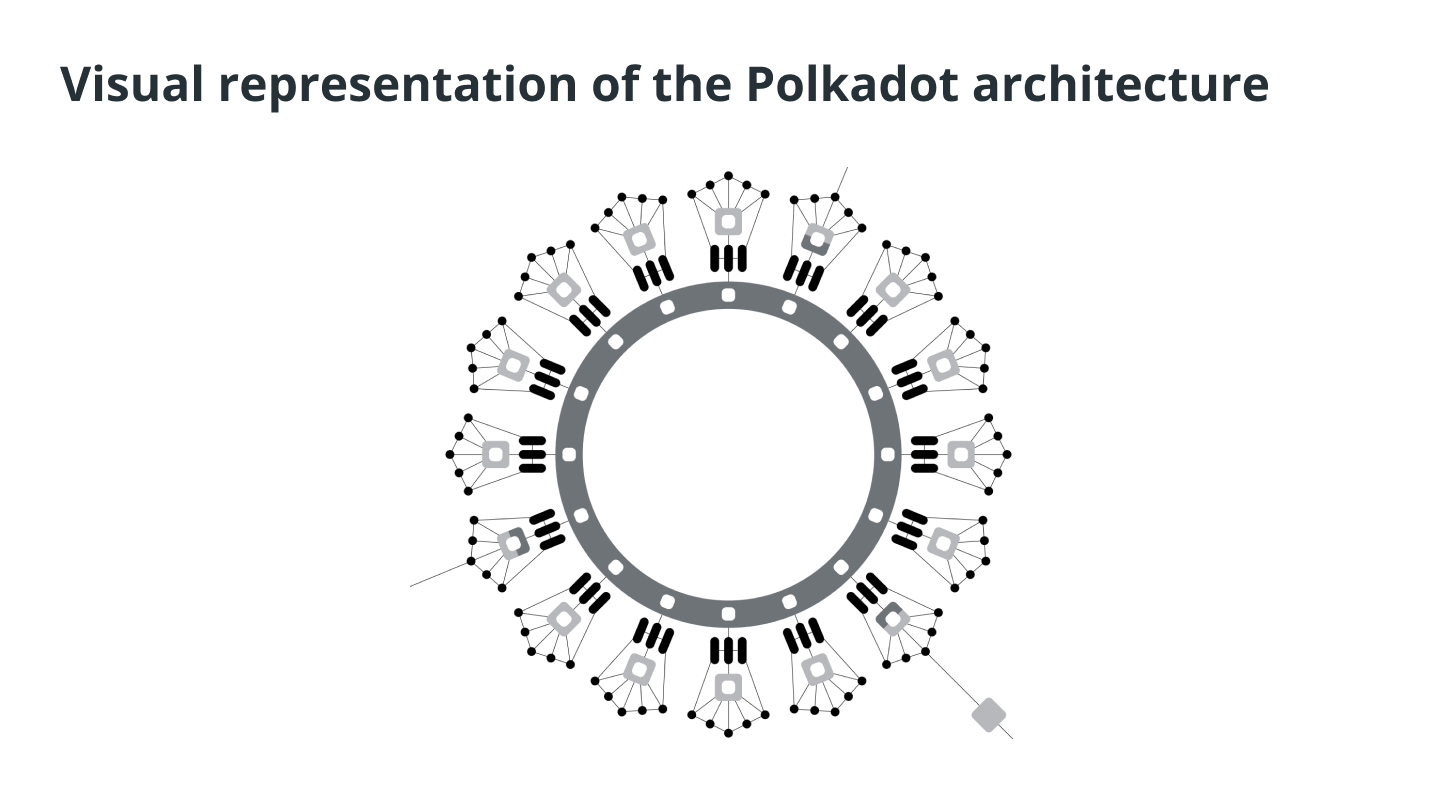 A representation in picture form of the Polkadot architecture
A representation in picture form of the Polkadot architecture
In the following paragraphs, we will examine each component of the Polkadot architecture in greater detail.
Polkadot relay chain:
is the component responsible for ensuring shared network security, reaching consensus, and enabling cross-chain interoperability. Because of their connection to the relay chain, all parachains benefit from the fundamental properties that it possesses.
Parachains:
Separate blockchains, each with their own corresponding tokens and functionality that has been fine-tuned for a particular use case. Connecting a parachain to the relay chain can be accomplished in one of two ways: paying for the connection on an as-needed basis or renting a slot to ensure continuous connectivity.
Bridges:
Sets of specialized blockchains that enable Polkadot shards to connect to and interact with other networks, such as Ethereum (ETH) and Bitcoin, among others (BTC).
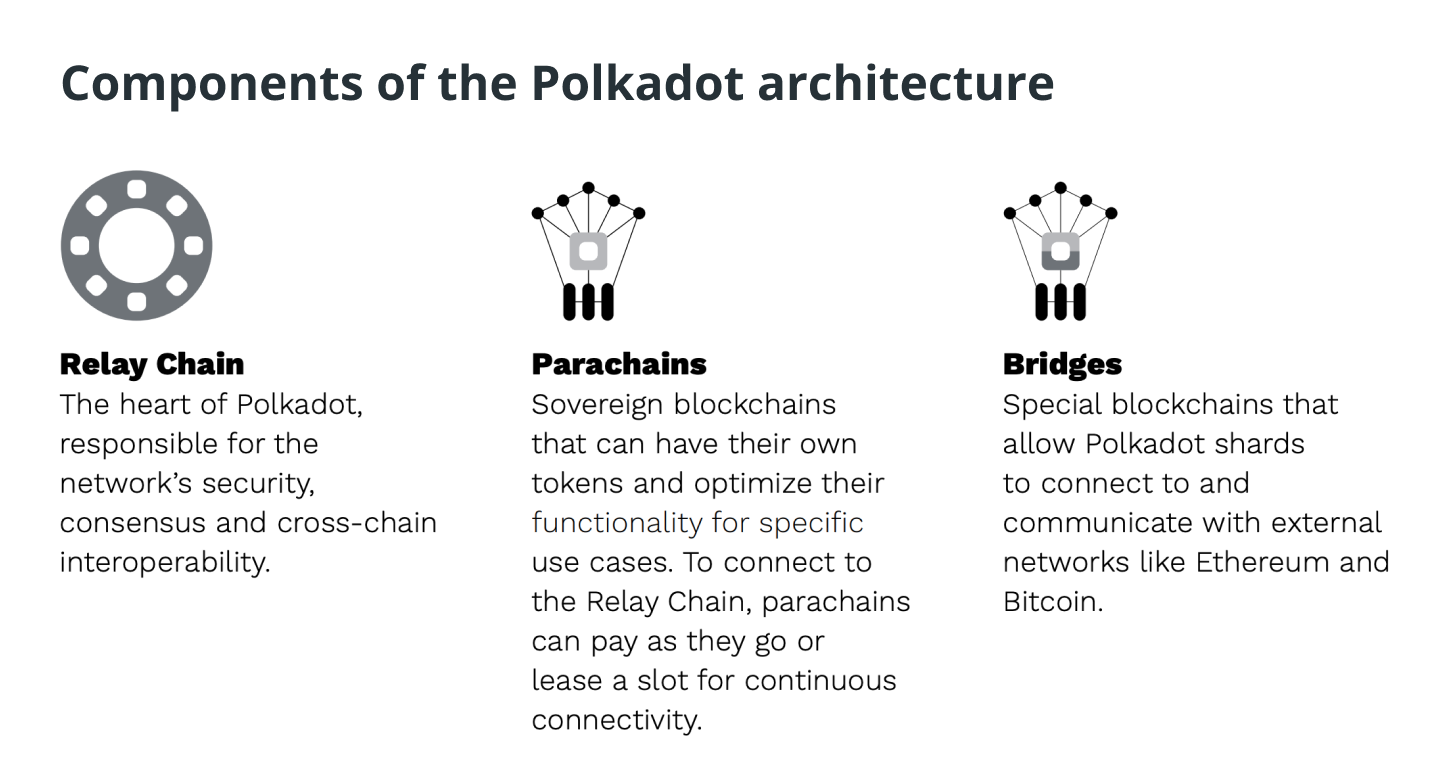
Users of the parachain can now conduct transactions more quickly and at a lower cost thanks to the Polkadot architecture. It paves the way for the development of parachains, enabling developers to create blockchains that do not transmit user information to the public network or require many transactions.
Updates made to Polkadot parachains
Through a newsletter, Polkadot frequently shares information about newly launched parachains, project updates, and upcoming parachain auctions. Let’s take a look at the most recent additions and changes that have been made to the Polkadot network.
Bridges
Polkadot is able to connect the internal parachains of its network in a seamless manner; however, in order for external chains to achieve the same level of access, they need to develop custom-built implementations.
Bridges are the components of cross-chain blockchains that make it possible to transfer assets to other blockchains. As a result of this, bridges are becoming an increasingly important component of the landscape of decentralized finance (DeFi). The vast majority of bridges, on the other hand, are confined.
Custodial bridges are also known as “trusted bridges,” and their level of centralization or decentralization determines whether or not they have the authority to manage the trading of coins and other assets on their respective networks.
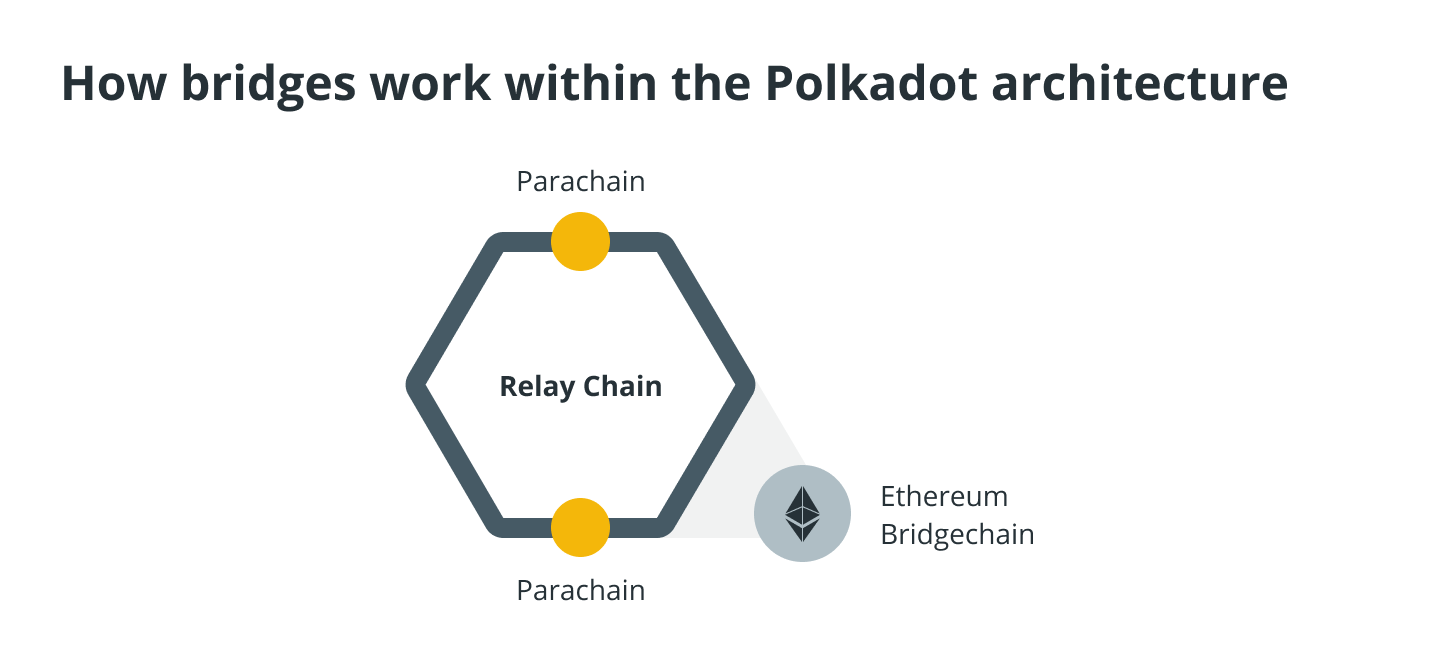
In order to carry out bridging operations, validators use multisig wallets, which are managed and maintained in bridges by a custodial architecture. The validator set may be variable or constant, and the keys associated with it may or may not be stored in a secure enclave; however, the architecture at its core continues to be the same.
Be aware, however, that the recent emergence of bridge hacks demonstrated that maintaining a honeypot with hundreds of millions of dollars in it poses a threat to one’s personal security.
Snowfork
Because the target blockchain verifies whether funds were sent from a user on the origin blockchain to an address on the target blockchain, this light client bridge has been given the nickname “Holy Grail of bridges.” The destination blockchain can generate new funds for the user or unlock previously locked funds without the user having to rely on any third parties to validate the information. However, light client bridges can be pricey because users are required to verify proofs on the blockchain, which results in an increase in gas costs.
Enter Snowfork, a trustless bridge for Ethereum that has been in development for the past two years. Users will be able to move ETH and other tokens from one Polkadot parachain to another or back to the Ethereum network using the bridge, which will most likely go through the Snowfork hub. This will be done in a trustless manner.
Everything will be based on the Ethereum Virtual Machine (EVM), which means that it is likely that they will also work on other networks. Nevertheless, more sophisticated versions ought to be able to transmit any data type across chains. As a consequence, Ethereum smart contracts will be able to communicate with Polkadot.
However, it is important to note that Snowfork is still in the process of being developed due to delays in its initial road map. GitHub provides access to the bridge for anyone who is interested in using it.
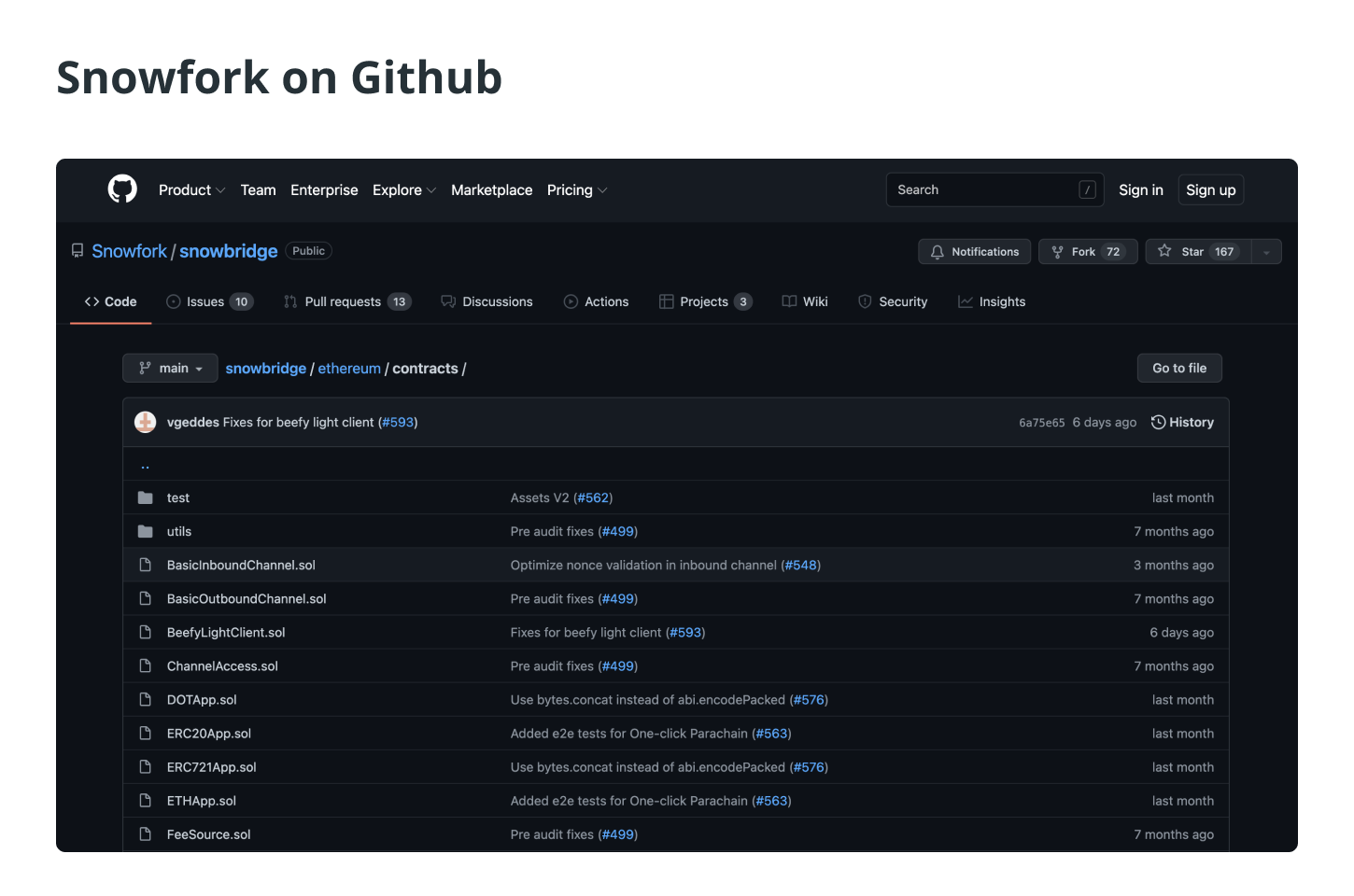
Custodial bridges under development
Although elaborate bridges are still in the process of being built, some projects have constructed temporary bridges that users can make use of in the meantime. The following are descriptions of three different bridges.
ChainBridge
ChainBridge is a bridge that is deployed between chains that are based on EVM and chains that are based on Substrate. ChainSafe developed the bridge as a “white-label” solution and used it to power their Ethereum bridges for various projects, including Centrifuge and Meter.
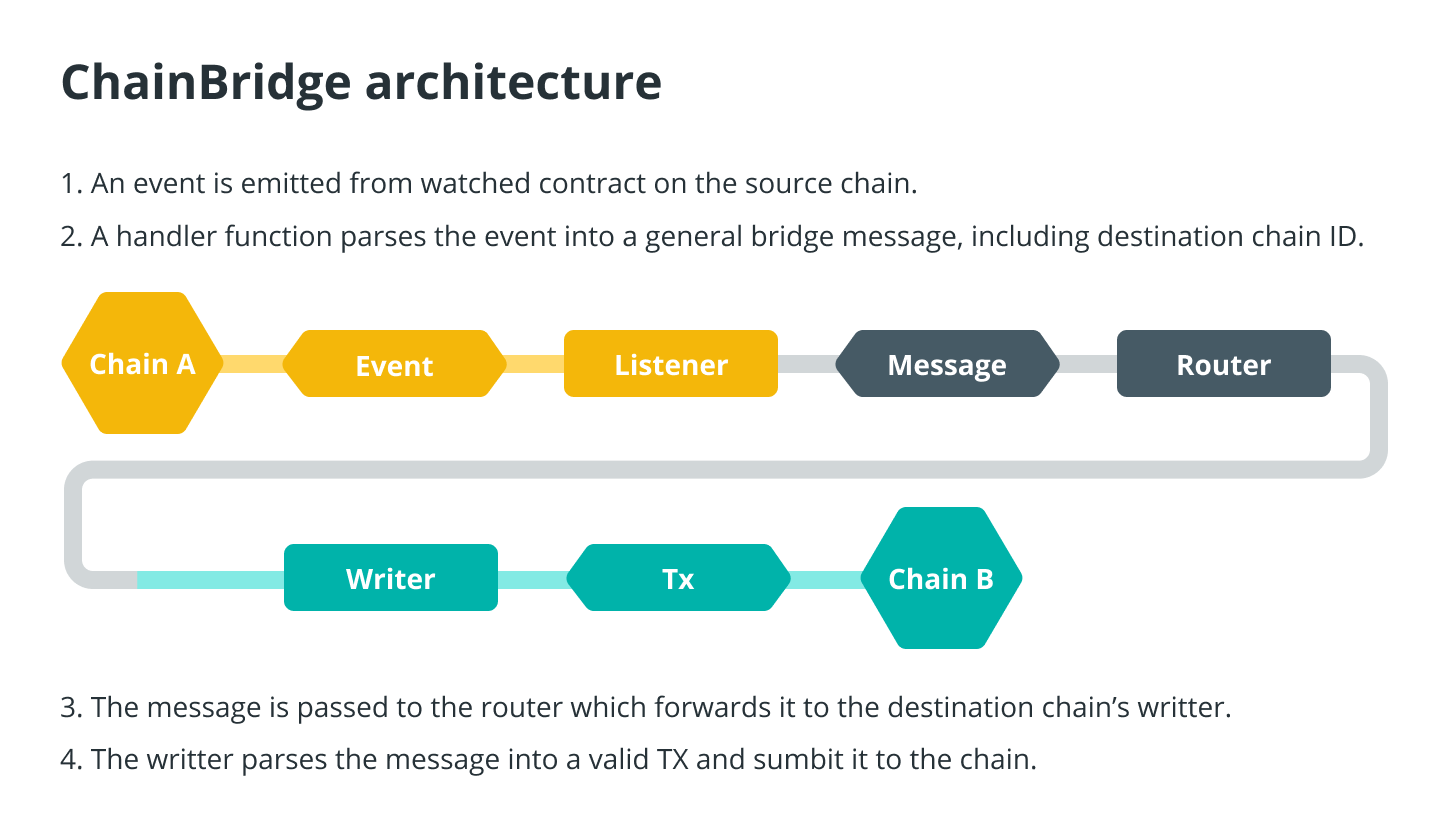
Astar Network
Astar Network is also putting in a lot of effort to build a number of bridges in order to become a hub for parachain bridges serving other ecosystems. The first implementation of this technology is called Cosmos (ATOM), which enables users to connect multiple chains to work with one another simultaneously. A further point to note is that Astar plans to eventually connect as many different platforms as it can to its network.
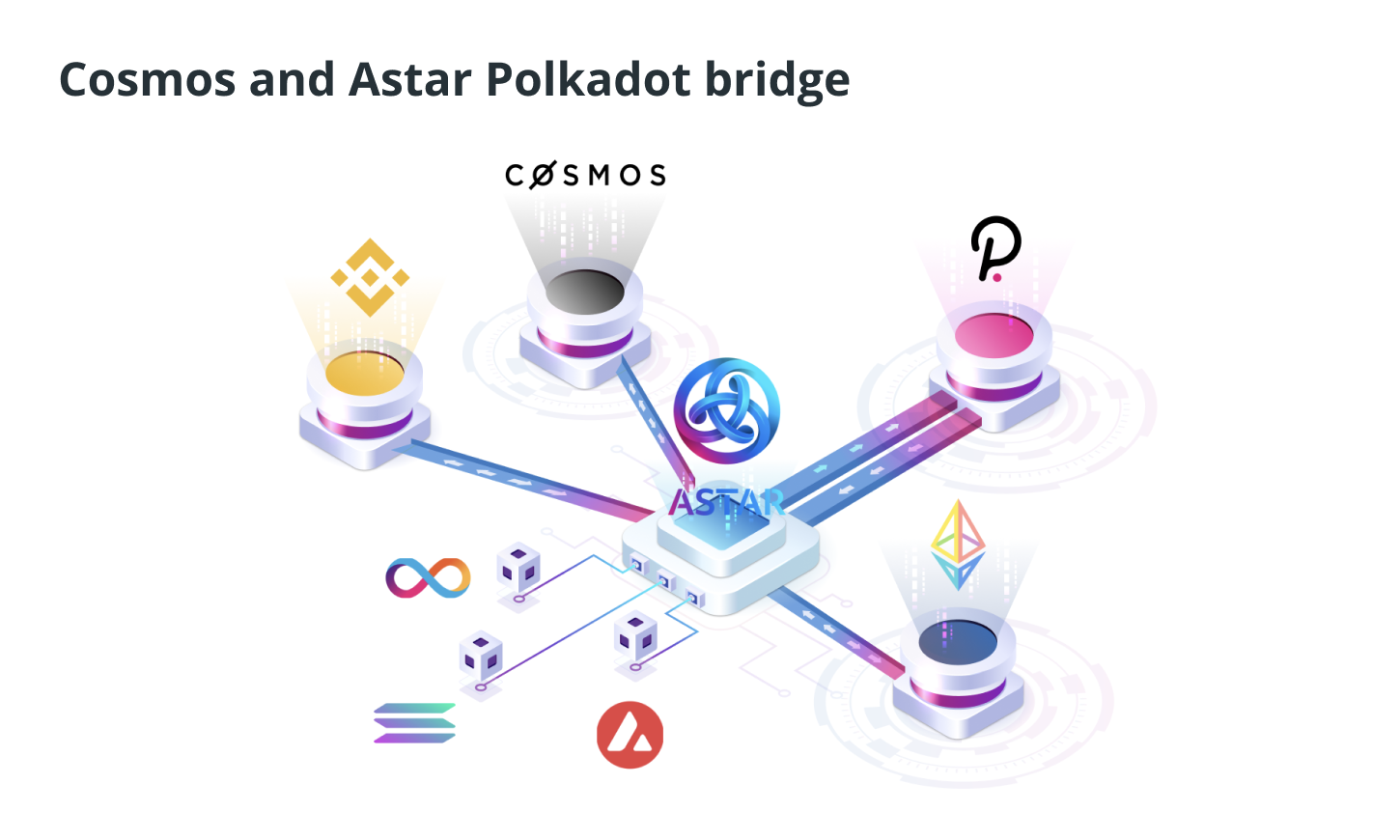
Interlay
Interlay is a Bitcoin project that aims to bridge the gap between different parachains. Interlay, much like Snowfork, is not a trustworthy platform but focuses primarily on providing financial incentives. And because Bitcoin does not make use of smart contracts, that is pretty much the best thing that can happen for users.

What is Polkadot built on
The technology that underpins Polkadot is known as Substrate. This is a development framework that makes it simple for users to construct a blockchain that is tailored specifically to their needs.
Substrate is a modular and adaptable framework that enables users to build core business logic with premade components while still retaining the ability to customize the framework itself. As a result, it is generic and reduces the number of assumptions made about the structure of a blockchain.
The following is a list of the primary characteristics of Substrate:
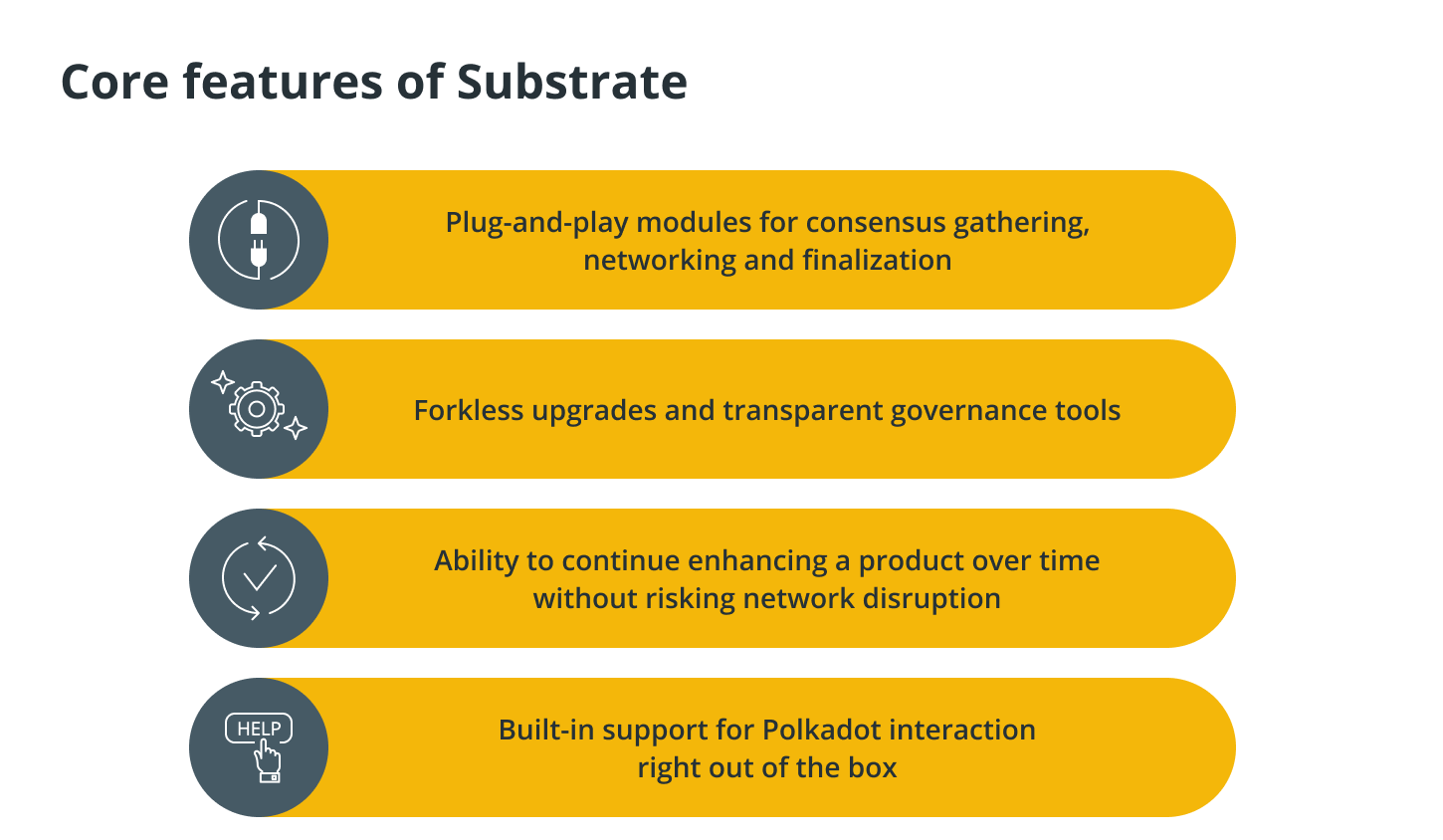
Substrate infrastructure
The knowledge and expertise gained by Parity Technologies while building Ethereum, Bitcoin, and enterprise blockchains has been incorporated into the construction framework known as Substrate. It is also put to use in the construction of the relay chain used by Polkadot.
Substrate’s main components are:
Database
The shared ledger that forms the basis of a blockchain needs to be carefully preserved and regularly maintained. Substrate does not presume anything about the information contained in or the organization of the blockchain.
The underlying database layer of Substrate makes use of a straightforward key-value storage system and builds a modified Patricia Merkle tree on top of it. Polkadot is able to swiftly determine whether or not an item can be found in the repository as a result of its one-of-a-kind structure. This is essential for light clients, which rely on storage proofs to provide lightweight interactions with the blockchain network while still maintaining a high level of trustworthiness.
Networking
The implementation of a peer-to-peer (P2P) networking protocol is essential to the functionality of communication on a decentralized blockchain.
Users of Substrate have the option of utilizing the Libp2p networking stack. This stack is modular. Without having to access centralized servers, it enables blockchains that are based on Substrate to share transactions, blocks, peers, and other important details about the system.
Because it does not make any assumptions about user-specific networking protocols, Libp2p is a one-of-a-kind piece of software that adheres to the philosophy of Substrate. Consequently, users are free to implement alternative transports without having to worry about the possibility of bias.
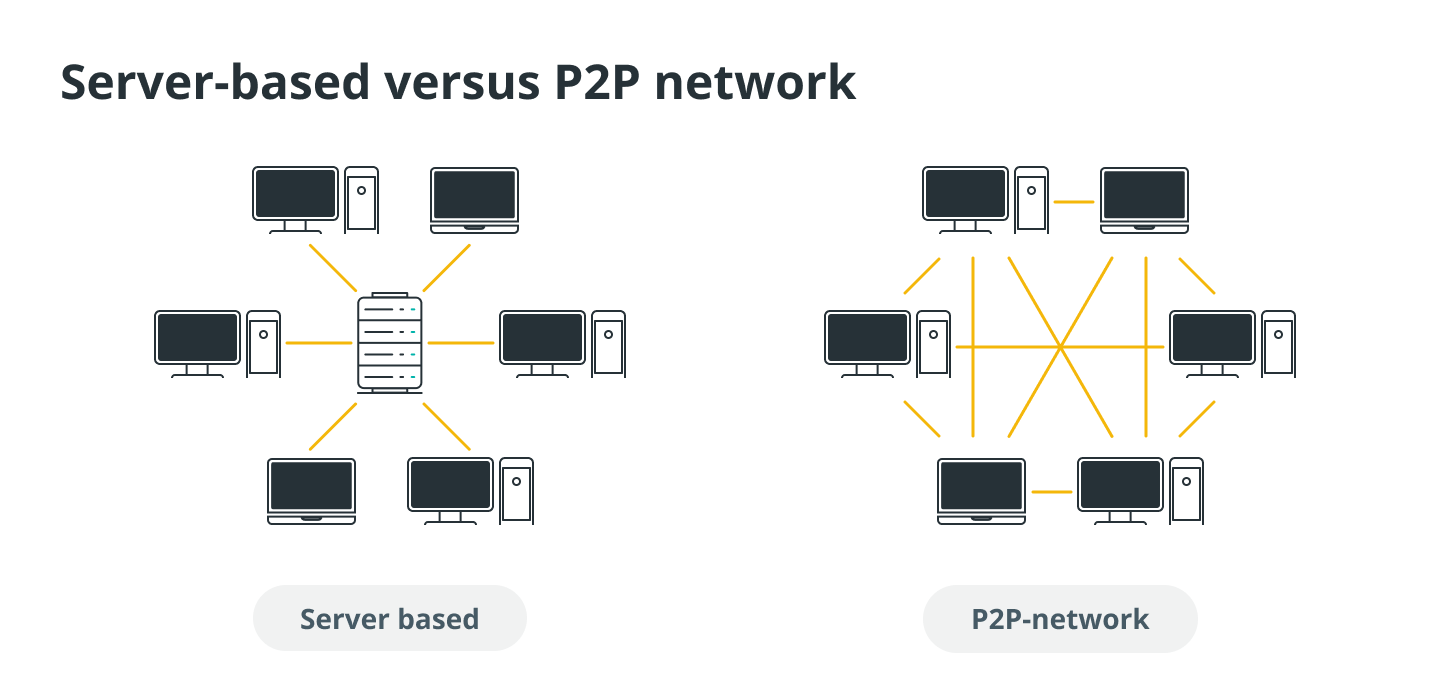
Transaction queue
Users are able to keep track of the state of the blockchain as well as any changes that occur by collecting and grouping transactions into blocks. Take note, however, that the order in which transactions are completed can have an effect on the final state of a ledger.
Substrate gives users complete control over their networks’ transaction dependencies and queue management processes. It makes the assumption that each transaction possesses a weight as well as a collection of prerequisite tags in order to construct dependency graphs. Linear dependency graphs are the most basic type, but users can also generate others that are more complicated.
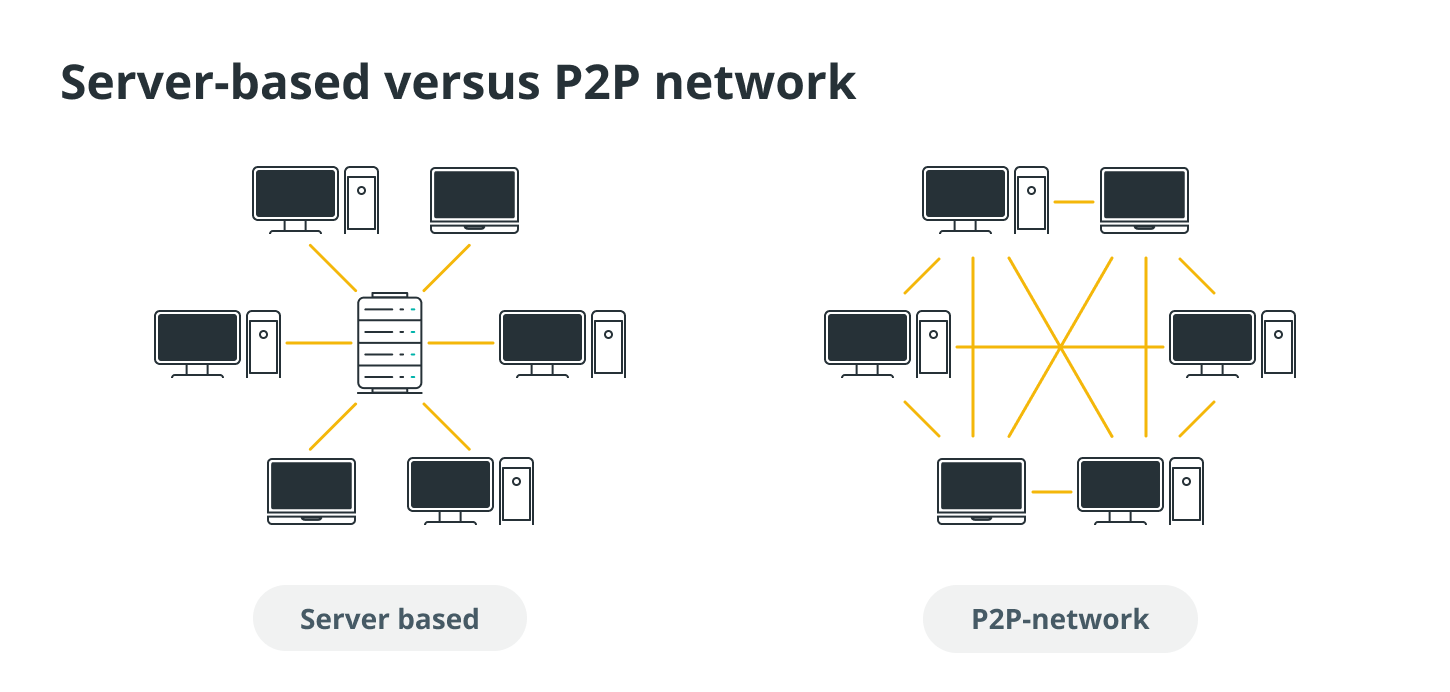
Consensus
A network that uses blockchain technology has multiple options for arriving at a consensus on changes that are made to the chain. In the past, consensus engines were inseparably bound to the remainder of the blockchain.
On the other hand, Substrate made a significant amount of effort to establish a consensus layer that users could easily modify while the platform was being developed. It was designed in such a way that it would still be possible to perform a hot swap of the consensus even after the chain had been activated.
There are several different consensus engines that are already built into Substrate. These include those that are owned by proof-of-work (PoW), Aura (Authority Round), and Polkadot. Keep in mind, however, that Polkadot’s engine is unique in that it separates the process of producing blocks from the process of finalizing blocks.
Updates to the data and indexing associated with Substrate
Because blockchain nodes cannot obtain old data in a direct and efficient manner, indexing projects like The Graph are essential. In addition, if something cannot be changed in any way, the only way to retrieve it more than once and save it in an easier format is to make an index.
Indexing is necessary for the integration of projects and data platforms with one another. For instance, rather than attempting to query the blockchain and create independent storage systems, data platforms can execute efficient queries by making use of indexing projects.
SubQuery
An indexing project known as SubQuery (SQT) operates in a manner analogous to that of The Graph. SQT token holders serve as candidates for the role of indexers in this system. Users are required to have SQT tokens in order to pay for queries in order to use the application. The indexer is responsible for the extraction and organization of blockchain data, enabling users to make queries on SubQuery much more quickly than they could do directly on the blockchain.
SubQuery, in contrast to The Graph, does not employ curators who are responsible for the creation of feeds; rather, it relies on purchase order contracts as its primary source of data.
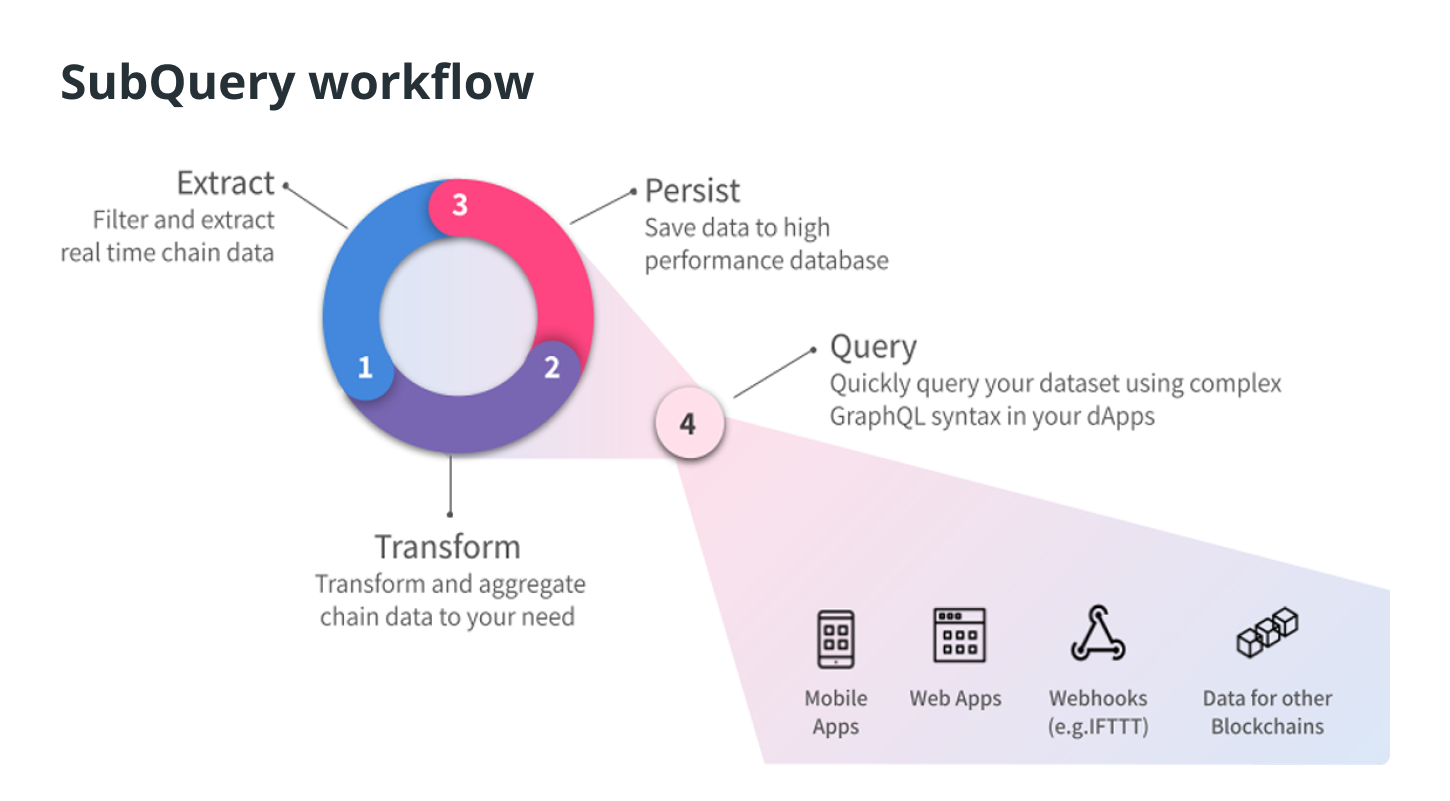
Subsquid
Another ongoing project to index Substrate content is called Subsquid. New features have been added to the data retrieval layer of the new Subsquid, but it still operates according to the same fundamental principle as the older version. It now employs three distinct actors, which are referred to as indexers, processors, and gateways, rather than relying on a single monolithic indexer class.
The bulk of the work, which is concerned with the organization of blockchain data, is handled by the indexers. As a consequence of this, they typically take the form of enormous servers. In the meantime, the processors are responsible for executing data queries; consequently, they can be any device that is smaller than the indexers.


